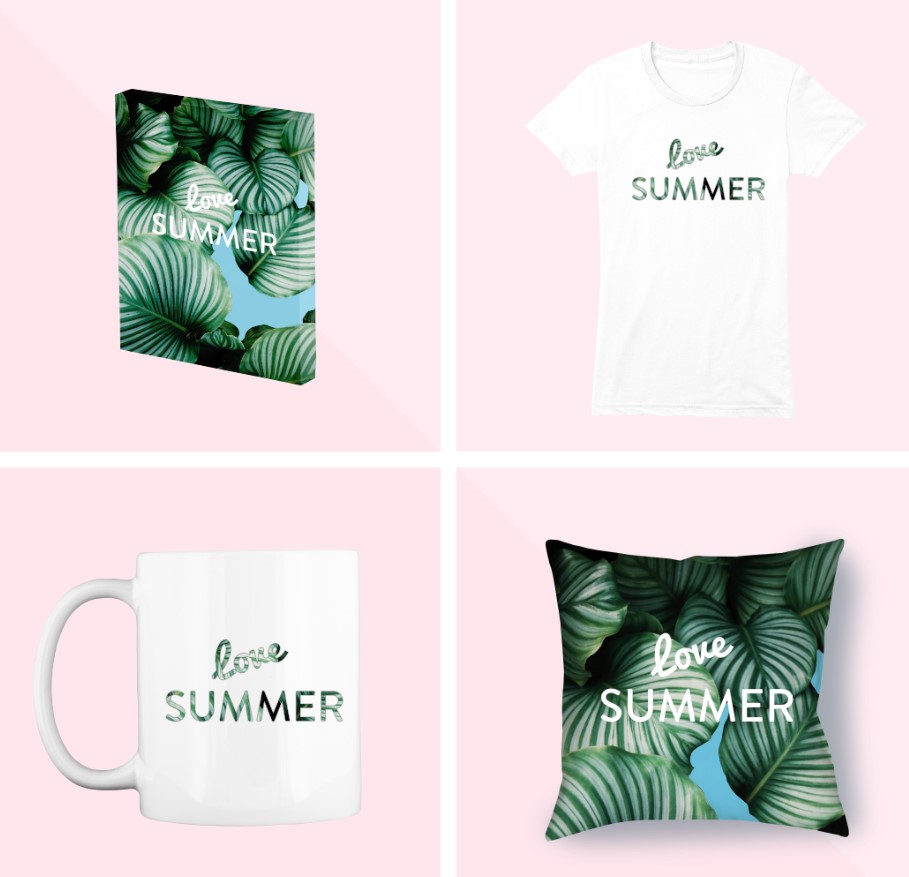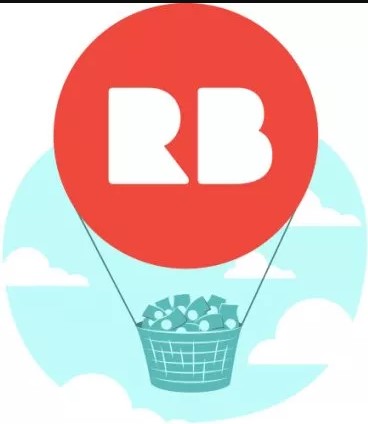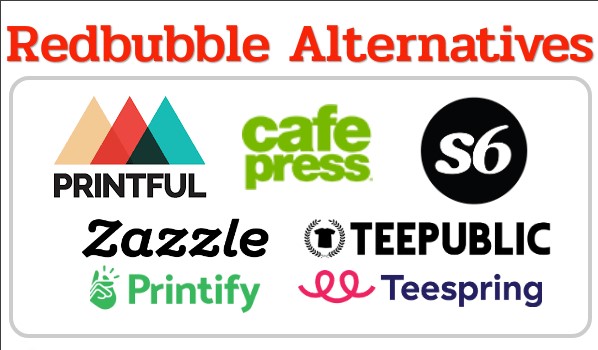Redbubble vs Teespring: Which Is Right For You
If you’re an artist, designer, or creator looking to sell your designs on physical products, two of the biggest print-on-demand (POD) platforms out there are Redbubble and Teespring. Both allow you to upload your designs which then get printed on demand onto t-shirts, stickers, phone cases, and more.
So which POD marketplace is right for you? Here’s an in-depth comparison of Redbubble vs Teespring across key factors to empower your decision making.
Redbubble vs TeeSpring: An Introduction
Redbubble and Teespring are two of the most popular print-on-demand (POD) marketplaces enabling independent artists and designers to sell their creations online.
Founded in 2006, Redbubble empowers artists to upload and sell their designs on over 70 high-quality products including apparel, stationery, home décor, bags, masks and more. Based in Australia but shipping worldwide, Redbubble handles all fulfillment and delivery through partnerships with manufacturers around the globe.
Teespring is a US-based platform focused specifically on apparel and accessories like t-shirts, hoodies and hats. Launched in 2011, Teespring offers free signup for creators to instantly transform their designs into products with no upfront costs. Their print-on-demand model means items are only produced once an order has been placed.
Both Redbubble and Teespring provide user-friendly dashboards for artists to track sales analytics, set pricing markups, and market products to eager fans spanning 100+ countries. While Teespring is simpler to get started with basic clothing lines, Redbubble offers more customization options and higher profit margins at scale.
What is the difference between Redbubble vs Teespring?
While both Redbubble and Teespring are print-on-demand platforms, their strengths and approaches differ significantly. Here’s a breakdown of their key differences:
| Category | Redbubble | Teespring |
|---|---|---|
| Design Playground & Product Variety | Wider range of print-on-demand products beyond apparel like home goods, wall art, masks, etc. | Focused specifically on apparel like t-shirts, hoodies and hats |
| Pricing & Profit Margins | Tends to enable higher profit margins for sellers per item sold | Lower profit potential per item, but provides more transparent margin calculations |
| Marketing & Reach | Built-in marketplace provides organic traffic and selling opportunities | No inherent site traffic, but more flexible custom branding and targeted marketing |
| Community & Support | Extensive self-service learning resources like courses and knowledge base | More limited educational content, but very lightweight and flexible platform |
| Shipping | Ships to over 30 countries globally via production and logistics partners | Currently only ships within the United States |
| Alternatives | Leading marketplace but many competitors like Printful, Printify emerging | Top apparel focus but lacks breadth of other major marketplaces |
| Material Quality | Varies more across products, but overall good apparel quality | Very soft, high quality fabrics and printing specifically for apparel items |
| Print Quality | Specialized printing process for each product category, durable prints | Reliable apparel printing but lower consistency across miscellaneous products |
| Promotions | Sitewide sales managed by Redbubble, no custom promotion options | Easy tools for sellers to create their own coupon codes and discounts |
Design Playground & Product Variety
Redbubble offers artists an expansive design playground, providing access to an unparalleled variety of print-on-demand products to showcase creations.
With 75+ base products spanning apparel, stationery, wall art, home goods and more, designers enjoy immense flexibility in applying designs towards their ideal mediums. Phone cases, pillows, masks – place stunning artwork on functional lifestyle items beyond just t-shirts.
Redbubble also empowers artists through letting individuality shine. The diverse marketplace brims with creators from all backgrounds and styles. As an open platform welcoming imaginative influences from cute to edgy, artistic passions flourish.
In contrast, Teespring centers focus around apparel, primarily t-shirts. While simpler for getting started, less product types limits possibilities for showcasing creativity. Without mugs for morning motivation or durable phone cases promoting personality, conveying designs digitally risks losing attendee attention.
However, Teespring better aids social causes through branded campaign building. Influencers and non-profits create targeted releases, leveraging engaged followings for amplification.
Overall, Redbubble’s expansive product selection fosters independent artistic joy and merchandising potential. But Teespring wins for mission-focused promotion reaching existing audiences. Choose your platform based on priorities – versatility or alignment branding? The artistic soul longs to explore new frontiers, with products delivering delightful purpose.

Pricing & Profit Margins
When it comes to potential earnings on print-on-demand products, both Redbubble and Teespring give designers flexibility in setting base prices. However, business models differ regarding fee structures and margin visibility.
Redbubble employs a markup pricing approach. Artists input production costs per item, then choose a creating selling price. Redbubble’s base margins get added on top covering manufacturing/shipping/platform fees.
While easy startup, opacity risks limiting profit optimization, especially for newer creators. Without understanding backend costs, properly assessing production viability proves challenging.
Alternatively, Teespring clearly outlines an item’s revenue breakdown. After entering selling price, expected profits display transparently factoring materials, printing, shipping and Teespring’s cut.
By revealing margin calculations upfront, designers better tailor pricing towards income goals. If hoping to net $5 per t-shirt, instantly validate what customer cost achieves said target.
Both platforms enable customizing product prices, but Teespring’s transparent profit modeling fuels data-driven decisions. Redbubble’s simpler setup better suits dabbling creators getting started. Determine priorities between optimizing earnings or easy exploration when comparing these print-on-demand marketplaces.
Marketing & Reach
When evaluating platforms to sell print-on-demand products, maximizing visibility remains vital for driving sales. Both Redbubble and Teespring offer tools assisting creators in promoting work, but strategies diverge regarding marketplace models.
Redbubble provides a built-in marketplace with over 65 million annual visitors browsing for unique creations. Artists instantly access organic traffic streams and passive selling opportunities by uploading portfolios.
However, popularity breeding abundance challenges standing out. With over 1 million sellers competing intensely, crafting brand identity through social media and digital advertising proves essential.
Alternatively, Teespring lacks inherent site traffic, instead incentivizing creators to build personal stores. Designers fully control branding, customize layouts, and leverage engaged followings across channels.
This freedom comes at the cost of effort. Without pre-existing awareness, independently driving visits via grassroots hustling or paid ads remains mandatory for sales.
Ultimately Redbubble furnishes built-in visibility advantages through populous marketplace, but risks oversaturation without differentiation. Teespring alternatively banks on founder creativity cultivated through custom promotion initiatives. Evaluate your personal bandwidth, goals and audience in choosing between visibility-first or tailored marketing approaches.

Community & Support
Running an online print-on-demand shop presents inevitable questions – how do I drive traffic? What makes a compelling product photo? Managing logistics like production costs, order issues, returns also add complexity.
Thankfully both Redbubble and Teespring offer helpful customer service infrastructure. However, community resources and responsiveness vary across platforms.
Redbubble shines through extensive self-service options. The Redbubble Academy delivers free courses on digital advertising, photography best practices, managing finances and more. Coupled with an always-available support center knowledgebase, new sellers thrive through guided education.
For urgent inquiries, Redbubble’s support team reliably responds within 4 business hours across email, chat or phone. Some limitations exist on weekends, but consistent accessibility empowers merchants.
By contrast, Teespring takes a more hands-off approach. Their streamlined support site answers common questions, but lacks the depth of Redbubble’s robust training content.
Email response times average 1-2 days. Reliance on DIY research risks frustrating sellers needing real-time assistance launching campaigns or troubleshooting issues.
Overall Redbubble better enables entrepreneurs through more readily available help resources. But Teespring’s lightweight model appeals to self-starters craving independence. Evaluate support priorities – structure or flexibility? – in choosing your platform.
Shipping
A key consideration when selling print-on-demand products online is shipping speed and affordability. Customers today expect fast, often free delivery. How do Redbubble and Teespring compare on order fulfillment logistics?
Both platforms produce items only after an order is placed, meaning production and shipping times lag traditional ecommerce. Redbubble creates most products within 1-3 business days, while Teespring apparel takes around 2 weeks.
Domestic delivery averages 5-10 days for Redbubble and up to 14 days through Teespring. Redbubble ships over 30 countries internationally via partners like USPS, while Teespring currently only ships within the United States.
Costs add complexity. All orders incur shipping fees, as products ship individually direct from production facilities. Redbubble offers volume discounts on batches of identical items, while Teespring reduces additional item costs within the same order.
But amassing inventory via bulk orders risks substantial logistics expenses, as printers locate globally. Unless dropshipping locally or bundling shipment, per-unit costs multiply quickly.
Ultimately customers tolerate longer wait times understanding print-on-demand model limitations. But persistent high shipping costs may deter repeat purchases, requiring creators to account for logistics in pricing strategies. Redbubble’s international infrastructure provides more flexibility addressing buyer expectations.
Alternatives
While Redbubble and Teespring lead the print-on-demand apparel space, sellers should also evaluate capabilities of emerging marketplaces when finding the right fit.
Printful stands out through product customization breadth and seamless Integration with existing stores. Mockup generators facilitate visualized merchandising, while API connections upload catalogs to Shopify, WooCommerce and more. However, Printful lacks inherent marketing opportunities of marketplaces.
Printify alternatively aggregates multiple suppliers into a centralized catalog. Creators compare vendors by cost, quality and production times when listing items. However, with less oversight than consolidated platforms, production inconsistencies may occur.
For turnkey startup brands, Sellfy furnishes new entrepreneurs bundled ecommerce solutions. The SaaS model builds designated online shops, while onboarding guides ease onboarding. But limitations around integrations and product selection may constrain long term scaling.
Ultimately, the “best” print-on-demand site aligns with current business needs and future goals. Evaluate product variety, customization options, built-in audience reach, fee structures and supported ecommerce integrations that best empower your online merchandising vision. Prioritize must-have capabilities today while ensuring flexibility to adapt tomorrow.

Material Quality
When customers purchase print-on-demand products, quality assurance remains top-of-mind. For apparel like t-shirts and hoodies, factors like fabric softness, durability and accurate visualization steer buyer satisfaction.
In testing samples from both marketplaces, Teespring edges out Redbubble for clothing quality and comfort. Their premium t-shirts and hoodies use insanely soft fabrics with slight stretch adding both coziness and shape retention.
Stitching and other details also test well – sleeves keep structure properly without bunching or uneven hemlines. Overall, Teespring apparel clearly beats commodity t-shirt manufacturers.
Comparatively, Redbubble’s offerings feature rougher fabrics lacking premium finishings. Their boxy sleeveless tops and t-shirts sacrifice form-flattery for basics-focused affordability. Photographic mockups onsite also idealize final product results.
For non-apparel merchandise however like phone cases and home decor, Redbubble rates higher leveraging specialized production partners per product category. But interested sellers should still request samples before launching with either marketplace.
Ultimately Teespring delivers exceptional apparel quality perfect for branding campaigns. But evaluate individual items across both platforms, as product-specific manufacturing can vary. Supply chain transparency and sampling remains vital for delighting customers post-purchase.
Print Quality
When evaluating print-on-demand platforms, reproduction accuracy and durability determine customer satisfaction post-purchase. So how do the printing processes of Redbubble and Teespring compare?
For apparel, Teespring employs both screen printing and direct-to-garment (DTG) digital printing contingent on order volumes. Screen printing excels applying designs to polyester with vivid ink curing into the fabric. But DTG alternatively offers exceptional quality for one-off pieces.
Redbubble leverages DTG for basic garments, with inks chemically bonding through a pretreatment soak. For graphic output onto materials like polyester t-shirts or leggings, they utilize sublimation printing. The ink vaporizes then reforms inside the fabric, securing longevity.
In testing, Redbubble’s prints better fuse into materials rather than sitting atop like transfers. However over time, both have shown respectable durability withstanding washing and wear. Teespring’s layers may slowly deteriorate and flake if not cured perfectly.
For other products like phone cases and home decor, Redbubble’s specialty printing methods like high-quality lithography outperform Teespring’s apparel-focused production. But sample various items yourself, as quality variance can occur across both marketplaces’ manufacturing partners.
Ultimately Redbubble edges ahead driving consistency and print durability across broader product types. But Teespring delivers uncompromising apparel quality perfect for scaling branded merch campaigns. Evaluate individual item testing when determining marketplace fit.

Promotions
Marketing merchandise profitably requires balancing production costs against reasonable customer pricing. Sales and promotions assist creators moving inventory while delighting buyer value. So how do Redbubble and Teespring compare regarding promotional tools?
Teespring furnishes sellers added flexibilities stimulating purchases through integrated discount features. Designers directly create coupons setting percentage discounts or dollar amounts off, including free shipping promotions.
However, freedom necessitates planning. Creators must account for reductions in setting initial pricing margins. And global customers only benefit from US-only free shipping offers.
Conversely, Redbubble exclusively manages sales promotions on behalf of the marketplace. While beneficial at scale, individuals lack control or customization abilities to directly entice customers. Sellers must hope to benefit from periodic sitewide events.
Ultimately, Teespring better outfits creators directly alluring fans, especially those with engaged followings. But ensure sufficient margins cover potential revenue losses from discounts, as promotion costs deduct from profits. Redbubble alternatively risks underserving customer retention forging direct relationships. Evaluate promotional philosophies when picking print-on-demand platforms.
Which POD titan will you choose?
When evaluating the leading print-on-demand platforms, Redbubble and Teespring both enable creators to profit from their designs while minimizing upfront risks. But key differences in business models cater to varying seller needs.
Redbubble Wins for Broader Production Flexibility
With expansive supported products spanning apparel, home goods, wall art and more, Redbubble empowers greater creativity turning passion projects into tangible objects. Their built-in marketplace also furnishes organic exposure opportunities to bootstrapped designers.
However, crowded competition risks oversaturation without dedicated branding efforts. Sellers also sacrifice some profit margin control relying on Redbubble’s fixed pricing model.
Teespring Takes Apparel Quality & Marketing Ownership
For creators committed specifically to merchandising apparel lines, Teespring delivers exceptional manufacturing quality and comfort with premium fabrics. Custom promotion tools also assist establishing distinguishing brand identity.
But product limitations beyond core clothing items constrain long term business pivoting. And without inherented site traffic, manually driving awareness demands greater grassroots hustling.
Ultimately passions and priorities guide best fit – are you launching a lifestyle brand pioneering across products? Or specifically spurning the next great band tee sensation? Empower your decision making by reflecting on core offerings, profit motivations and marketing willingness. Then leverage the strengths of your platform choice fueling creative entrepreneurship.
